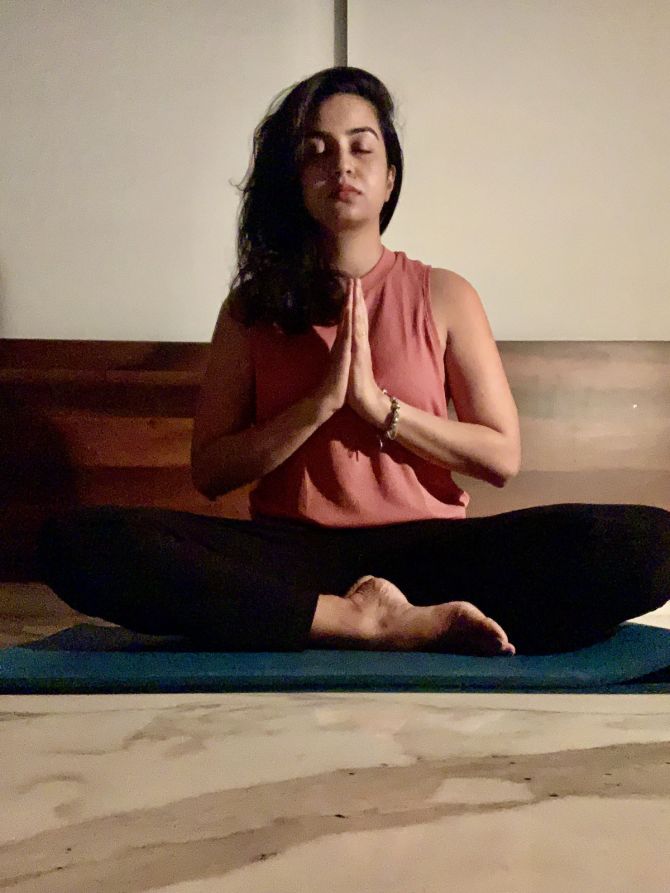 | « Back to article | Print this article |
Yoga expert Shikha Pandey tells you how effective breathing can help you balance your energies and improve the health of your lungs.

The pandemic brought in a lot of focus on building immunity and enhancing the health of our lungs.
And rightly so because these are two key aspects of our being that determine our body's response to the virus and also its impact on our body.
The age old yogic practice of Pranayama is extremely beneficial in keeping the immunity boosted through breath work and also aids in holistic recovery if you have been exposed to the virus.
The word Pranayama compromises of two root words 'Prana' or life force or vita energy and 'Ayama' or extension or expansion.
Prana is the force that exists in all things, whether animal or inanimate. Although closely related to the air that we breathe, it is more subtle than that.
Pranayama utilises breathings to influence the flow of prana in the nadir or energy channels of our energy body (pranamaya kosha).
Thus, the word Pranayama means extension or expansion of the dimension of Prana. The regular practice of Pranayama can enable to attain a higher state of vibratory energy and awareness.
Prana and Lifestyle
Lifestyle has a profound impact on the energy body and the prana flowing through it. Physical activities and mental fluctuations, all affect the pranas.
Irregularities in lifestyle such as a non nourishing diet, stress, irregular schedules result in what people describe as ‘being drained in energy’.
Depletion of energy from the energy channels lead to metabolic dysfunction and disease over a period of time.
The techniques of Pranayama reverse the process, energising and balancing the flow of pranas within our body.
On a physical level, respiration is also directly related to the heart.
A slow breathing rate keeps the heart healthier by reducing the blood pressure.
Deep breathing also increases absorption of energy and enhancing dynamism, vitality and a sense of well being.
Do's And Don'ts Of Practising Pranayama:
Practice 1: Natural Breathing
This practice is like saying ‘hello’ to your breath.
A simple technique that introduces the practitioners to their own breathing pattern and respiratory system. This pranayama can be performed by anyone at any time.
Awareness of the breathing process in itself is sufficient to slow down the respiratory rate and establish a more relaxed rhythm.
This in terms helps to centre the thoughts, build focus and calm the mind.
Step By Step Guide to Practice :
Practice 2: Abdominal Breathing
Abdominal or diaphragmatic breathing is practised by enhancing the action of the diaphragm and minimising the action of the rib cage.
The diaphragm is a dome shaped muscle that separates the lungs from the abdominal cavity.
During inhalation the diaphragm moves downward, pushing the abdominal contents downward and outward.
During exhalation the diaphragm moves upward and the abdominal contents move inward.
This pranayama can be practised by anyone.
Benefits
Step By Step Guide to Practice :
The above two practices also help you take the first step towards incorporating pranayama is your daily routine.
The first step towards building an effective practice is to get in sync with your breath.
Do practice and share your feedback. And remember every time you shape your breath, you shape your mind.
Shikha Pandey is internationally certified in yoga from The Yoga Institute and the founder purnayog.com